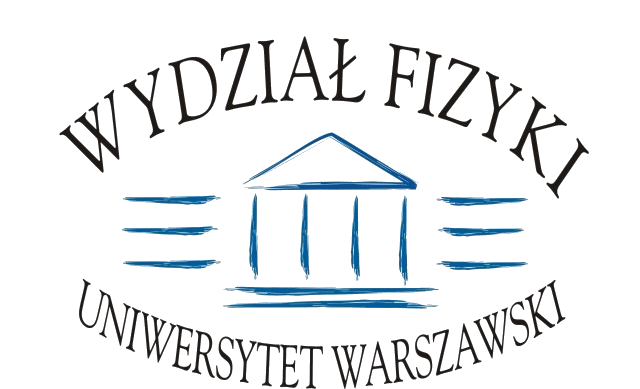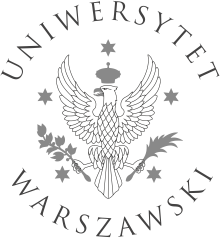Seminarium Kosmologia i Fizyka Cząstek
2006/2007 | 2007/2008 | 2008/2009 | 2009/2010 | 2010/2011 | 2011/2012 | 2012/2013 | 2013/2014 | 2014/2015 | 2015/2016 | 2016/2017
2014-11-25 (Wtorek)
Andreas Goudelis (HEPHY Wien)
The dark side of naturalness: Beyond the MSSM
If weak scale supersymmetry (SUSY) is to somehow explain the radiative stability of the Higgs boson mass, it is likely that we have to resort to non-minimal variants of SUSY models. I will show that under the - commonly adopted - assumption that the dark matter of the universe is comprised of neutralinos, recent limits from direct detection experiments as well as dark matter density measurements place stringent bounds on the naturalness of minimal supersymmetric models. Moreover, even non-minimal models introducing moderately decoupled new physics that can be described through an Effective Field Theory formalism face similar problems.
2014-11-18 (Wtorek)
Bohdan Grządkowski (IFT UW)
CP violation in light of the LHC Higgs signal
For an explanation of baryon asymmetry an extra source of CP violation is required.I will review Two-Higgs-Doublet extensions of the Standard Model whichoffer simplest scenario for spontaneous or explicit braking of CP in a scalar sector. It turns outthat observation of the Standard-Model-like Higgs boson at the LHC severely constrainsthe models. It will be shown that the presence of CP violation requires the mostgeneral Two-Higgs-Doublet Model and therefore implies a possibility for large flavour changingneutral currents (FCNC).
2014-11-04 (Wtorek)
Łukasz Nakonieczny (IFT UW)
Black holes and superconductivity of cosmic strings
Among possible topological defects cosmic strings are one of the most interesting ones. Their networks may represent remnants from the early stage of the evolution of our Universe. On the other hand isolated superconducting cosmic strings may be responsible for some interesting astrophysical phenomena like high-redshift gamma-ray bursts. In this talk I will present results concerning the influence of strong gravitational field on superconductivity of the cosmic string.
2014-10-21 (Wtorek)
Marek Karliner (Tel-Aviv University)
Exotic quarkonia and doubly heavy baryons
There is a strong experimental evidence from B and charm factories for theexistence of exotic hadronic quarkonia, narrow resonances which cannotbe made from a quark and an antiquark. Their masses and decay modesshow that they contain a heavy quark-antiquark pair, but their quantumnumbers are such that they must also contain a light quark-antiquark pair.I discuss their interpretation as "hadronic molecules" and provide fairlyprecise predictions for masses and quantum numbers of the additionalexotic states which are naturally expected in the molecular picture buthave yet to be observed.I also discuss another type of hadrons containing two heavy quarks -doubly heavy baryons. The large number of $B_c$ mesons observed by LHCbsuggests a sizable cross section for producing doubly-heavy baryonsin the same experiment. Estimates are provided for the masses of thedoubly-heavy ccq, bbq and bcq baryons, using a method which accuratelypredicts the masses of ground-state baryons with a single heavy quark.The production mechanisms, decay modes, lifetimes, and prospects fordetection of doubly heavy baryons are also discussed.
2014-10-14 (Wtorek)
Bryan Zaldivar Montero (University of Brussels)
Very Early Universe and Dark Matters
I will talk about generic dark matter candidates whose genesis are out-of-equilibrium, as contrary to the more popular weakly-interacting (WIMP) scenario. The motivation comes from the absence of WIMP signals in different experimental set-ups, which constrains the relevant couplings to the visible sector to be much smaller than originally thought. Discussion on initial conditions at reheating period will be presented, as well as possible phenomenology of these elusive candidates.
2014-10-07 (Wtorek)
Moritz McGarrie (IFT UW)
SUSY Model Building for a 125 GeV Higgs
In the context of the MSSM the recently discovered Higgs boson predicts either multi-TeV scale stops or a multi-TeV scale At-term and these are not easily accommodated either from aesthetic grounds (naturalness), pragmatically (potential to be discovered at the LHC) nor in practice (from the conventional approaches to supersymmetry breaking and UV physics).In this talk I will present 3 interesting approaches to these puzzles: I will discuss their pros and cons and how they may be extended. In the 1st approach the tree-level Higgs mass is lifted through non-decoupling D-terms, allowing for sub-TeV stops/At-term. I will discuss how such an enhancement can be tested at the LHC and ILC through Higgs branching ratios. In the 2nd, we look at generating a large At-term through "power-law” RGEs which arise from an extra dimension, allowing for sub-TeV stops. The 3rd approach is to combine flavour with supersymmetry breaking, to generate light stops and still be consistent with the LHC exclusions on 1st and 2nd generations squarks.
Stron 3 z 3






